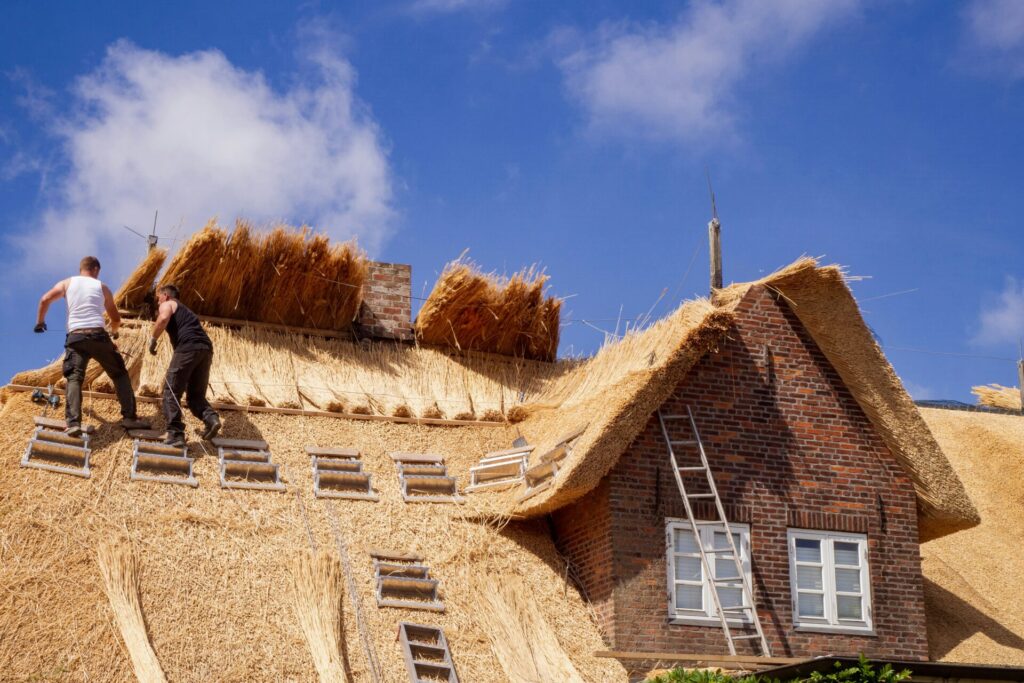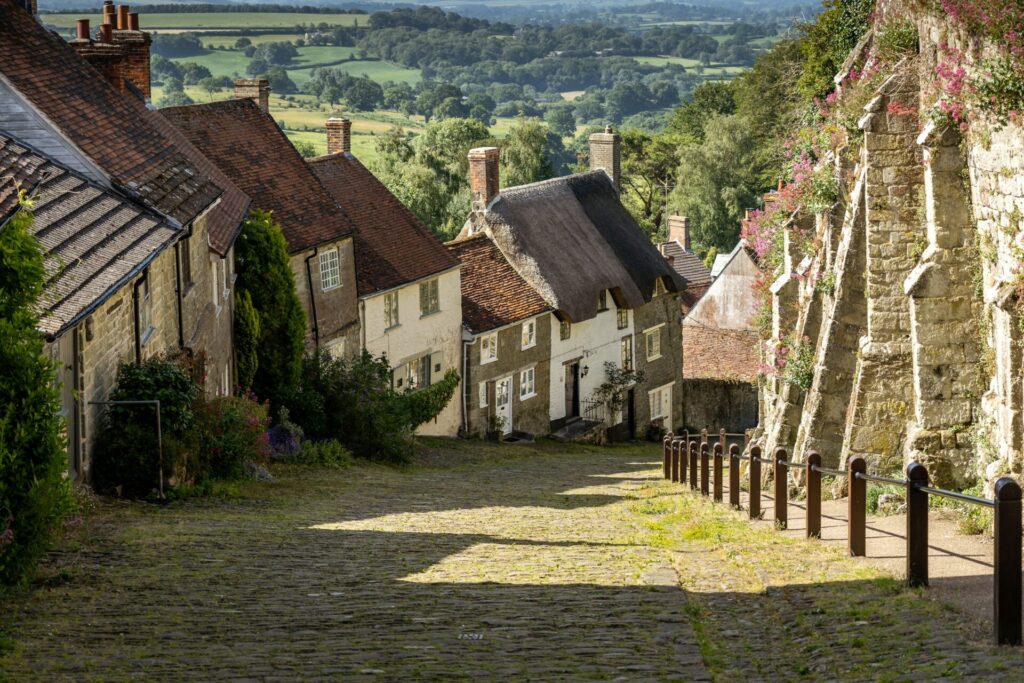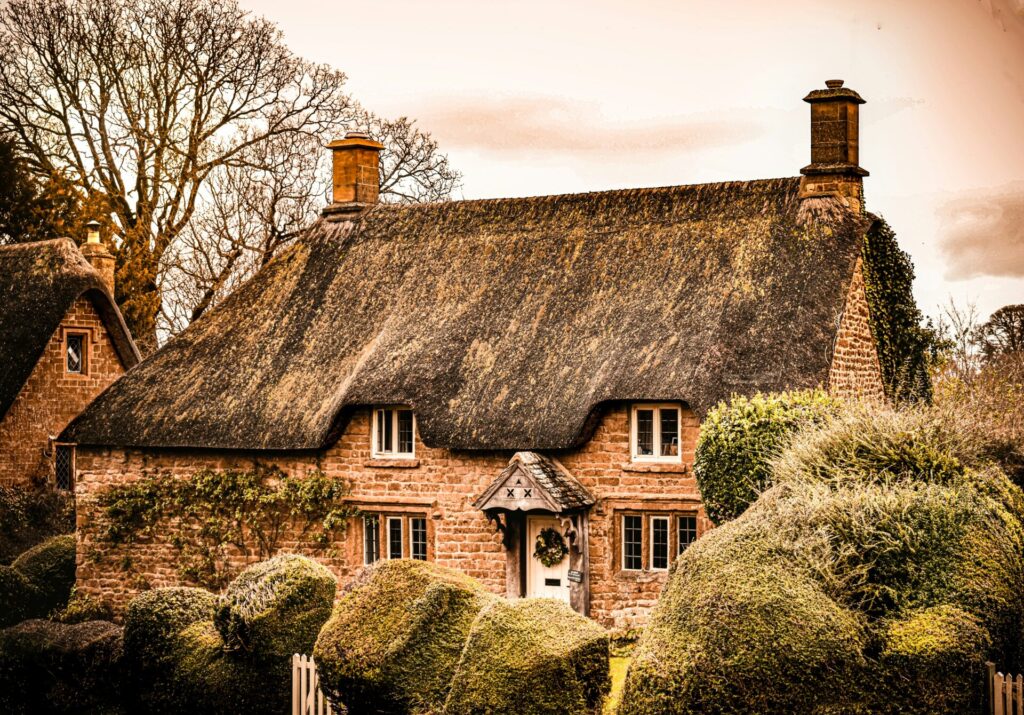Thatched roofs have a timeless charm that can enhance the aesthetic appeal of any property. Understanding the different types of thatch materials, their benefits, and how to care for them is crucial for homeowners with thatched roofs. In this blog post – Different Types of Thatch and What You Need to Know, we aim to provide you with valuable insights into the world of thatched roofs.
Understanding Thatched Roofs
Thatched roofs use dried plants like straw, reeds, or grasses, woven together to create a cover that keeps rain out. This style of roof has a rich history, being one of the oldest roofing methods known. Its appeal isn’t just in its look. Thatched roofs have practical benefits too. The way a thatched roof is put together – tightly packed layers of vegetation – gives it natural insulating qualities. This means houses with thatched roofs can stay warmer in the winter and cooler in the summer. Making them energy efficient.
In addition to their insulating properties, these roofs are also breathable. This is important for managing moisture inside the house. Unlike modern materials that can trap moisture, thatched roofs allow air to circulate effectively, reducing the risk of dampness and mould inside.
The process of creating a thatched roof requires skilled craftsmanship. Thatchers, as they are known, layer the materials in a way that ensures water runs off the roof without seeping through. This technique, while traditional, is effective in making the roof waterproof.
Importantly, the success and longevity of a thatched roof depend on the quality of materials used and the skill of the thatcher. When done correctly, a thatched roof not only provides excellent protection from the elements but also adds a unique aesthetic to a home, blending in perfectly with natural surroundings.
Types of Thatch Materials

Photo by Robert Katzki on Unsplash
When selecting the material for a thatched roof, it’s essential to consider the various options available. Each material has its distinct features regarding durability, appearance, and how well it insulates.
Different Types of Thatch and What You Need to Know
Long straw is a traditional choice, known for its classic, shaggy look that adds a quaint, old-world charm to buildings. It’s relatively durable but requires more maintenance than some other options.
Water reed, often considered the premium choice for thatching, offers excellent longevity and a neat, tidy appearance. Its tight, compact structure makes it highly waterproof and insulating. Homes in wetter climates might particularly benefit from water reed thatching.
Combed wheat reed is another option, providing a look similar to long straw but with a slightly neater finish and a bit more durability. It’s a popular choice for those seeking a balance between the rustic appearance of long straw and the neatness of water reed.
Heather is less commonly used but is known for its robustness and thick, dense coverage. It provides excellent insulation and a unique, textured look that stands out among the more common thatching materials.
Each material’s performance and appearance can be influenced by the local climate, the property’s location, and the specific installation techniques. Homeowners should consider these factors, alongside professional advice, to choose the best thatch material for their roof.
Benefits of Thatched Roofs

Photo by Julian Hochgesang on Unsplash
Thatched roofs are not only visually appealing but also offer functional advantages for homeowners. Their most significant benefit is their superior insulation capabilities. Due to the dense layering of materials, thatched roofs are naturally adept at maintaining a comfortable indoor temperature throughout the year. This thermal efficiency can lead to reduced energy costs, as less heating is needed in the winter and less cooling in the summer.
Another advantage is their environmental friendliness. Thatched roofs are made from natural, renewable resources like straw, reeds, and grasses. These materials are biodegradable and have a low carbon footprint compared to conventional roofing materials. Opting for a thatched roof supports sustainable practices and contributes to a greener planet.
Additionally, thatched roofs bring an unmatched aesthetic charm to properties. They imbue homes with a distinctive character and rustic beauty that is hard to replicate with modern materials. This unique appeal can enhance the visual allure of a property, potentially increasing its market value and appeal to prospective buyers.
Moreover, the materials used in thatched roofs are breathable, promoting better air quality within the home by allowing moisture to escape. This natural ventilation helps to prevent damp and mould issues, contributing to a healthier living environment.
Choosing a thatched roof brings a blend of beauty, efficiency, and sustainability to a home, offering numerous advantages to environmentally conscious homeowners seeking a unique property feature.
Caring for Your Thatched Roof
Looking after a thatched roof requires attention to detail and regular check-ups. Homeowners should schedule an annual inspection to identify any signs of wear and tear early. These inspections can uncover minor issues before they escalate into major problems. Experts recommend re-thatching and adding new layers of material as necessary, which can significantly extend the roof’s life.
Waterproofing treatments are also vital. They help in preventing moisture penetration, a common concern for thatched roofs. Keeping the roof free from debris, such as fallen leaves and branches, is important too. This not only helps in maintaining the roof’s appearance but also reduces the risk of dampness.
Another aspect of care involves ensuring adequate ventilation around the roof to prevent the buildup of moisture. Promptly addressing any signs of pest infestation is crucial as well. Insects and rodents can cause damage if not dealt with quickly.
By adhering to these maintenance tasks, homeowners can preserve the beauty and functionality of their thatched roofs for many years.
How Long Do Thatched Roofs Last?

Photo by Nick Fewings on Unsplash
The longevity of a thatched roof is influenced by several factors, including the materials used, the craftsmanship of the installation, and the ongoing maintenance it receives. Different thatch materials come with varying lifespans.
For instance, water reed can last up to 60 years due to its durability and resistance to weathering, whilst long straw has a shorter lifespan, typically around 20 to 30 years. Combed wheat reed and heather offer lifespans that fall within these ranges, depending on specific conditions and maintenance.
A critical aspect of extending the life of a thatched roof is regular and thorough maintenance. Annual checks are recommended to identify any issues early on, which allows for timely repairs or replacements to be made before minor damage escalates. Factors such as the roof’s exposure to weather elements, the angle of the roof pitch, and local climate conditions also play a significant role in determining how long a thatched roof will last.
Engaging with a professional thatcher for the initial installation and subsequent maintenance is essential. Skilled thatchers use techniques that ensure the roof is well constructed and has the best chance of reaching its maximum lifespan. Additionally, the environment surrounding the property, including trees that may overhang the roof, can affect longevity, as falling debris can damage the thatch or encourage damp.
In summary, with the right materials, skilled installation, and dedicated maintenance, a thatched roof can be a durable and long-lasting feature of a home.
Safety Precautions for Thatched Roofs

Photo by Piotr Chrobot on Unsplash
For homeowners with thatched roofs, prioritising safety measures is essential due to the heightened risk of fire associated with these types of materials. Implementing practical steps can significantly reduce this risk.
Firstly, installing spark arrestors can prevent embers from chimneys landing on the roof and igniting the thatch. Regular maintenance of chimneys is also critical; ensuring they are clean and in good repair minimises the chance of sparks escaping.
Different Types of Thatch and What You Need to Know
Additionally, it is wise to keep any flammable materials at a safe distance from the roof to avoid accidental fires. Equipping the property with functioning smoke detectors in key areas provides an early warning system, while having a fire extinguisher readily available can offer immediate response capabilities in the event of a fire.
Taking these precautions not only enhances the safety of the property but also contributes to the peace of mind of homeowners and residents.
Mortgage Lenders and Thatched Roofs
When exploring the possibility of purchasing a property adorned with a thatched roof, it’s paramount to engage with mortgage lenders early in the process. This step is crucial because lenders might have particular stipulations or additional requirements for properties featuring this distinctive roofing. The unique nature of thatched roofs means that they are viewed differently by lenders compared to standard roofing materials.
One should be prepared for lenders to enquire about the condition and maintenance history of the thatched roof. They may request detailed surveys or evidence of regular upkeep, which serve to assess the property’s risk level. Such diligence is rooted in the fact that thatched roofs, while highly insulating and aesthetically pleasing, carry a distinct set of maintenance needs and a heightened fire risk compared to tiled or slate roofs.
Furthermore, securing insurance for a thatched property might involve additional considerations, which can influence a lender’s decision. Insurance companies often require specific safety measures to be in place, such as the installation of fire retardants or regular chimney cleaning, to mitigate the risks associated with thatch. Demonstrating compliance with these requirements can be instrumental in satisfying lender concerns.
Ultimately, thorough communication and documentation are key when dealing with mortgage lenders regarding a thatched-roof property. Demonstrating proactive management of the roof’s condition and adherence to safety guidelines can positively influence the lending process, making the dream of owning a thatched property more attainable.
Different Types of Thatch and What You Need to Know
We hope that has helped any query or questions you may have had on Thatched Roofing. We believe they are beautiful and if done property and maintained, are simply the best type of roofing out there. If you have enjoyed our blog – Different Types of Thatch and What You Need to Know, and need more advise or wish to sell you home, do call us !
You can reach us on 01327 624275 for Daventry or 01788 486100 for Rugby. Alternatively, contact me (David) on this link here – contact us.
Book your free Valuation – BOOK NOW




